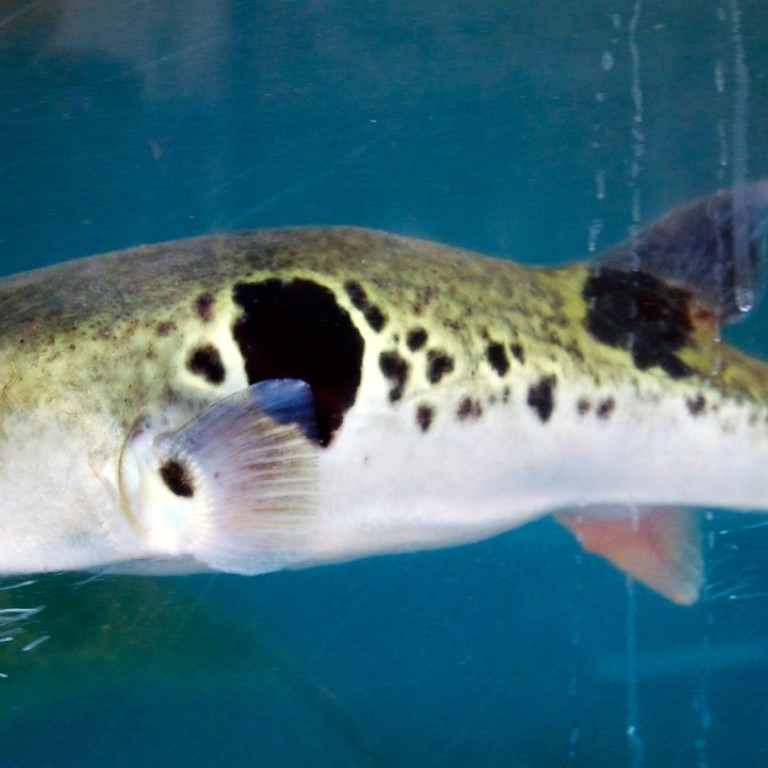
How fugu or pufferfish gets to your table: all you need to know about Japan’s deadly delicacy – and the secret way it is auctioned
The fish is so poisonous it can lead to agonising death by respiratory failure, but it is a rare and expensive delicacy in Japan, and is sold at a curious auction that involves only secret hand signals and gestures
In the corner of a Japanese fish market bustling with visitors, the vending machine selling Hyper Aqua water features a cartoon. The image looking back at me – in fact, winking at me – is of a smiling pufferfish, known as fugu, its pink lips drinking from a bottle balanced on one of its fins. It’s a typically cute Japanese advertising ploy, but one using a cartoon fish with a dark secret.
The lure of the pufferfish, a rare and expensive delicacy, is down to tetrodotoxin, a poison which, when ingested, can potentially induce symptoms including numbness and paralysis, before a terrifying, agonising death by respiratory failure, the poor victim conscious until the horrible end.
Poisonous pufferfish taken by Chinese villagers after truck spills seafood
It’s surprising then that people willingly consume dishes that could – in theory – contain this neurotoxin. It’s also a fish sold at auction in a truly remarkable way.
The history of eating fugu in Japan is said to date back more than 3,000 years with fossilised remnants found across the country in archaeological digs and in mounds that served as ancient rubbish dumps. The famed 17th century Japanese poet known as Basho even composed traditional haiku poems about it – with a wry sense of humour: “I enjoyed fugu and soup yesterday. Luckily, nothing has happened.”
It is said that the Japanese emperor was historically forbidden to eat fugu because of the risks, as the tissues of some of the fish’s internal organs – notably the liver – can be more than 1,000 times more lethal than cyanide.
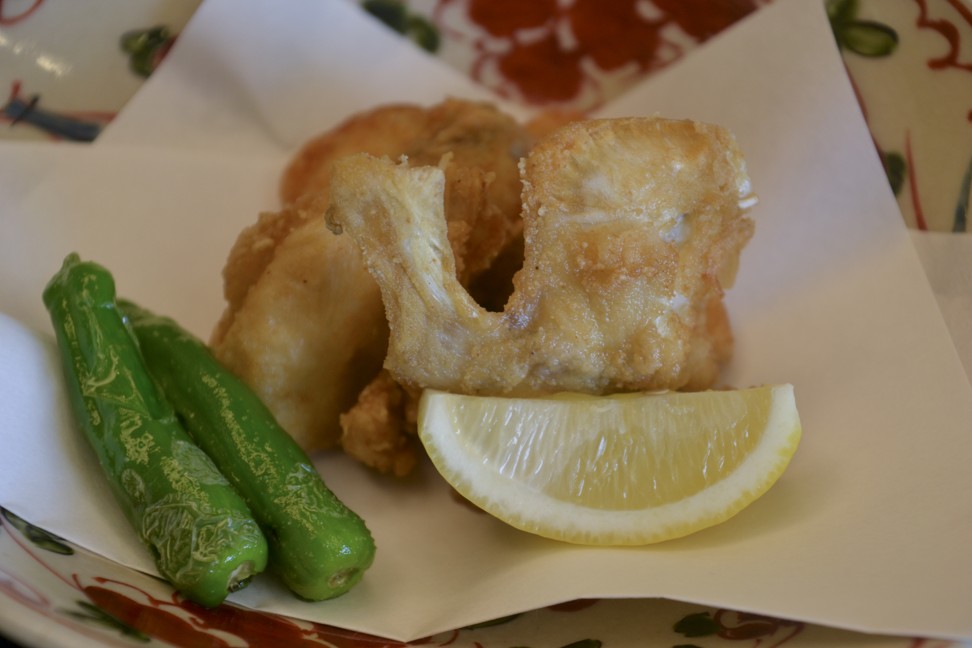
Indeed, eating fugu was banned in the 16th century and only became legal in 1888 on the orders of the first prime minister of Japan, Hirobumi Ito.
Ito was born in the picturesque city of Shimonoseki in Yamaguchi Prefecture at the westernmost tip of Japan’s largest island, Honshu. He lifted the ban partly to spur the region’s economic development, as Shimonoseki is Japan’s undisputed home of fugu.
The waters of the Kanmon Straits, on which the city lies, are renowned spawning grounds for tiger pufferfish. As a result, the dozens of fugu restaurants there have since become known as the country’s best, attracting domestic travellers and curious international visitors. But Shimonoseki is also home to Japan’s most unusual pufferfish auction, a secretive, predawn event known as fukuro zeri – or bag auction.
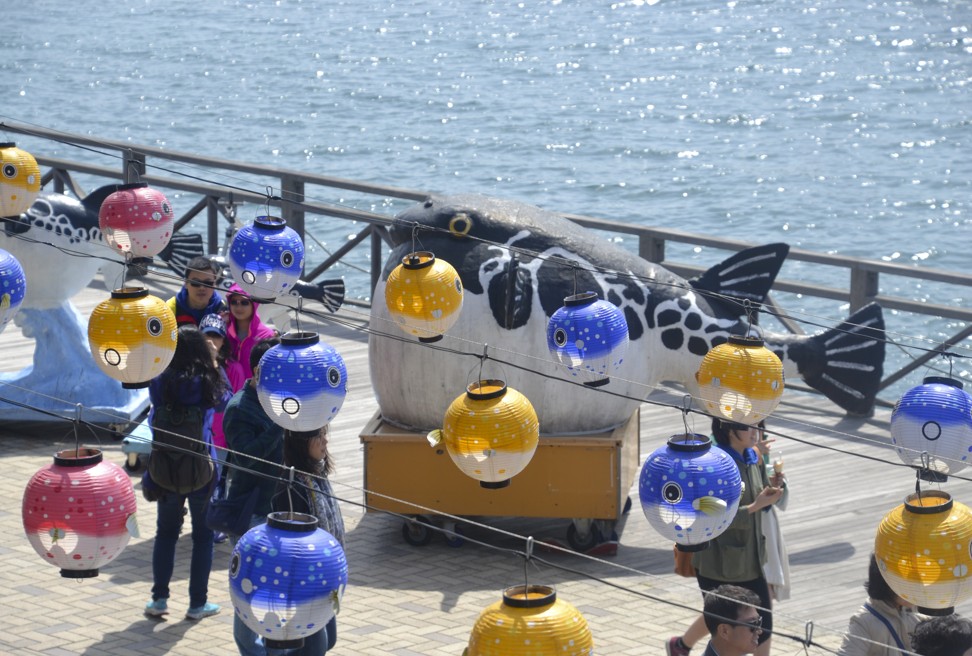
While Tokyo’s Tsukiji fish market is a famously popular destination for tourists, few visitors ever make the very early morning journey to the docks of Shimonoseki to witness the unique auction.
96 is the most difficult number to communicate, while the numbers up to 99 are also pretty difficult
So, at a somewhat painful 2.50am, I was joined by a translator and an official from Shimonoseki Council as we pulled up at an unremarkable warehouse near the harbour. It houses Haedomari Market, where around 80 per cent of Japan’s fugu is landed and sold, making it by far the nation’s largest pufferfish auction and the only place to use the strange selling method.
Inside, workers in coloured waterproof overalls and maroon baseball caps – to distinguish themselves from the buyers in yellow caps – were busy loading and stacking blue crates of pufferfish. The men – all of them were men – worked diligently in near silence, occasionally standing on stone pens that held the different types of pufferfish.
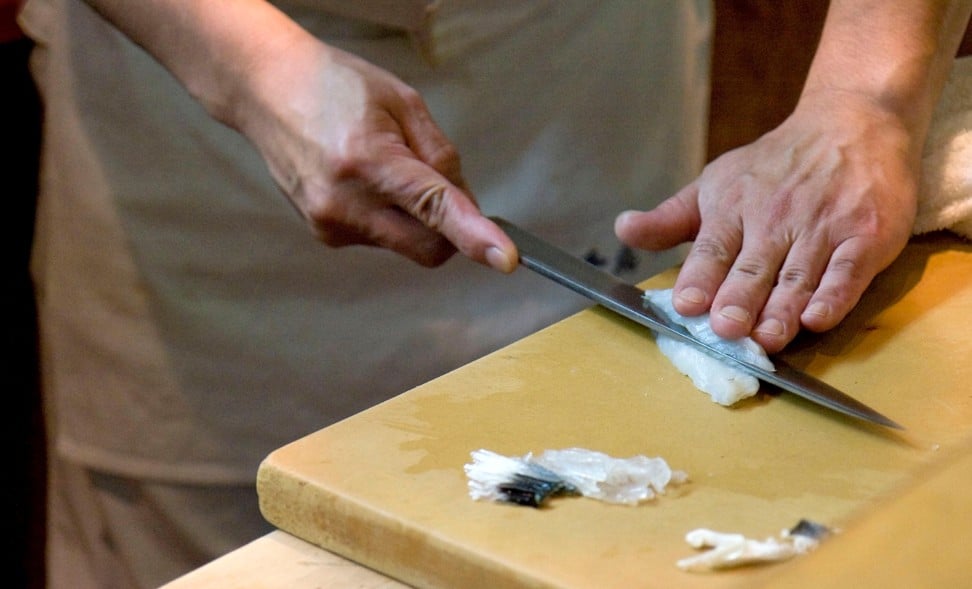
At times they used a long wooden pole to move the crates or a net to transfer the fish, sorting them by size and type before weighing them.
Buyers milled around, peering down and squatting to get close to the most prized and expensive torafugu, or wild tiger fish, so named for their unique, beautiful markings, that had been laid out on black tarpaulin. These top-quality fish can be found across Japan but are comparatively rare, meaning they only number around 100 in total per auction and can therefore fetch about 30,000 yen per kilo (US$275) when in perfect condition. Some emitted occasional disconcerting squeaks, while others puffed up, to show the famed defence mechanism they use in the wild.
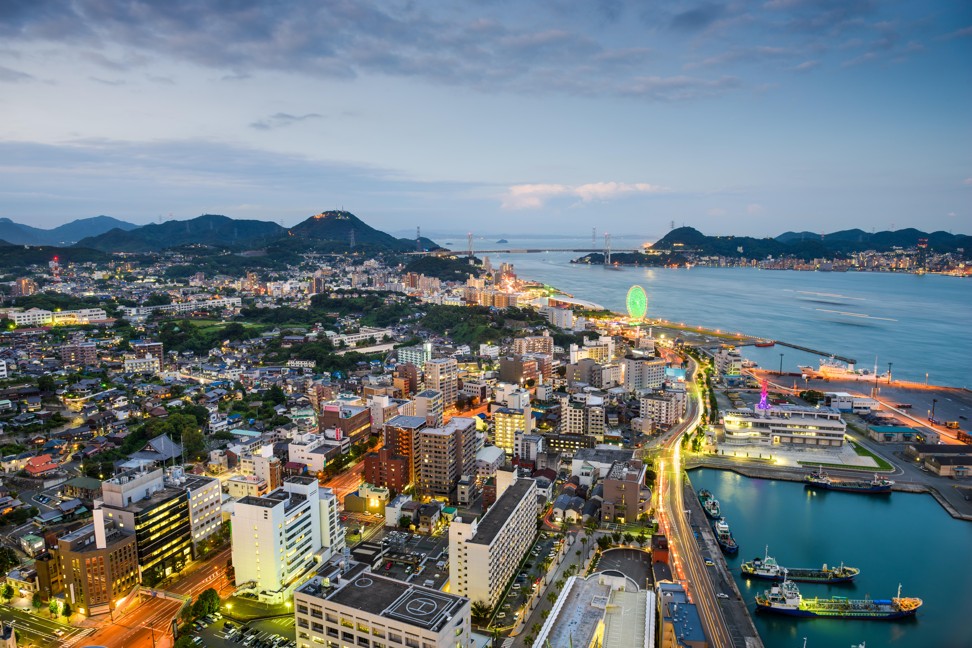
The market, which has operated on this site since 1974, takes place six days a week during the season that runs from late October to late March. There are 17 types of fugu caught around Japan and this market usually sells 13 of them, the most popular and cheapest being mafugu.
Today mafugu (purple puffer) is largely farmed, with the prices of around US$50 per kilogram agreed on before the main event. The serious bidding action happens around the remaining 10-15 per cent of the day’s sales – wild fish, which are more expensive and served in more exclusive restaurants across Japan.
To the sound of seagulls screeching behind a trawler that was coming into the port, at precisely 3.20am the auctioneer Yoshi Yanagawa, simply dressed despite the cold in a white T-shirt, navy blue trousers, black wellies and a maroon cap, rang a bell to start the auction of Japan’s most infamous delicacy.
He took a sleeve of black material, about two feet long, and placed his right hand and forearm into it. Next, he used his left hand to hold it in place, thereby ensuring his right hand was completely covered. Then the extraordinary transaction process began.
Chinese man nearly dies after eating soup made from pufferfish
Blue crates were lined up on the floor, each containing between 15 and 20 wild pufferfish of similar sizes, many of which were still moving. Some lots, especially those of the most prized plump specimens, were sold per crate, while other lots consisted of multiple crates.
Standing by each lot in turn, he asked the bidders, “Will you buy this one?” before a handful of the 15 or so buyers present, both from restaurants and wholesalers, raised their hands to signal that they wanted to bid.
They then walked up to the auctioneer, one by one, to tell him precisely how much they were willing to pay through intricate signals made by touching his right hand and fingers under the material. No prices were mentioned, and there were none of the shouts and cries heard in fish and produce markets all over the world; in fact, the auctioneer was for the most part the only one talking.
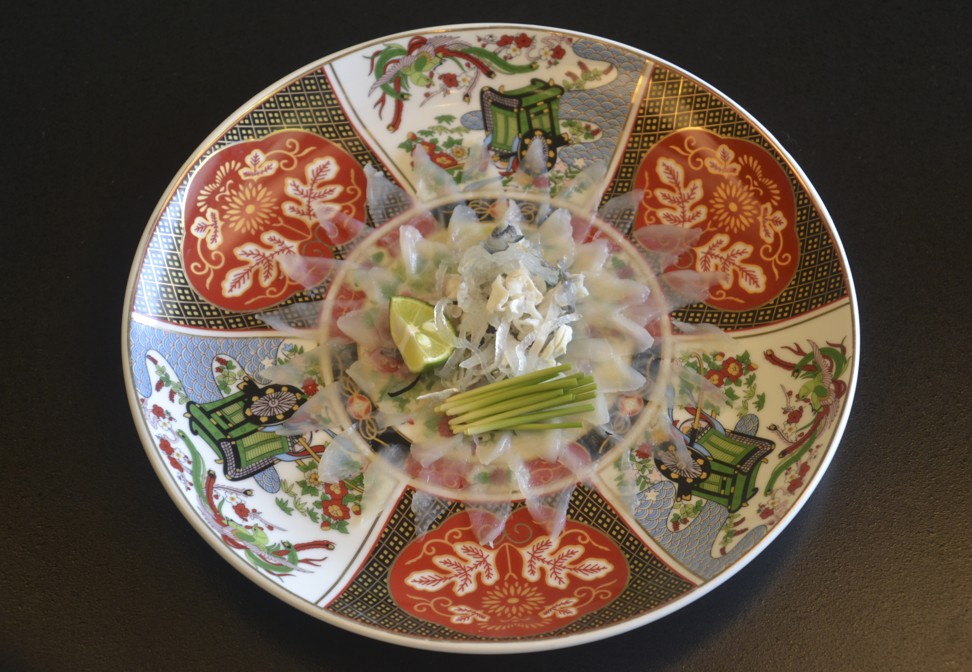
Once the buyers had made their secret bids, Yanagawa pointed to the one successful winner, who would nod in recognition, before the group moved on to the next lot.
Incredibly, as Yanagawa explained in an interview following the auction, when there’s an exact tie in bids – an occasional occurrence – then the two highest bidders face off for the lot, again by using hand signals – this time not in secret, but by playing the children’s game of rock-paper-scissors.
In Japanese the game is known as janken, and is used everywhere from playgrounds to the business world, having even been used to settle corporate disputes.
As soon as the auction ended, the fugu were packed into polystyrene crates to be taken away to the 10 licensed processing centres around the city, where the fish have all toxins removed in a process that follows rigorous legal guidelines.
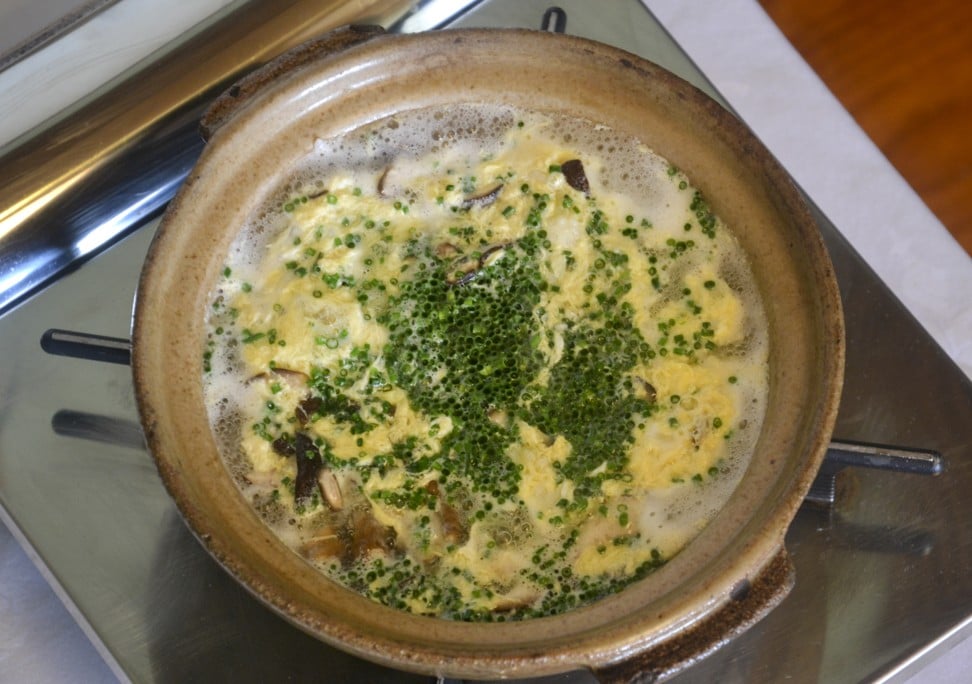
As market workers hosed down the floors or sipped coffee from vending machines, I joined the auctioneer in a small office as he sat on a black plastic sofa by an ancient gas heater, surrounded by posters of fish.
Yanagawa told me that he had been working in the market for 15 years, before explaining that the bids differ, in part, according to the pressure exerted on his hand and arm by the fingers of the bidders.
Numerous theories abound as to the genesis of the unique secret selling method, but he said he learned that the technique originated in Korea and was first used at horse auctions, and used a bigger sleeve, like that on a kimono.
He then proceeded to demonstrate some of the bewildering succession of touches used in the bidding process, holding his fingers in different orders and combinations to denote different prices.
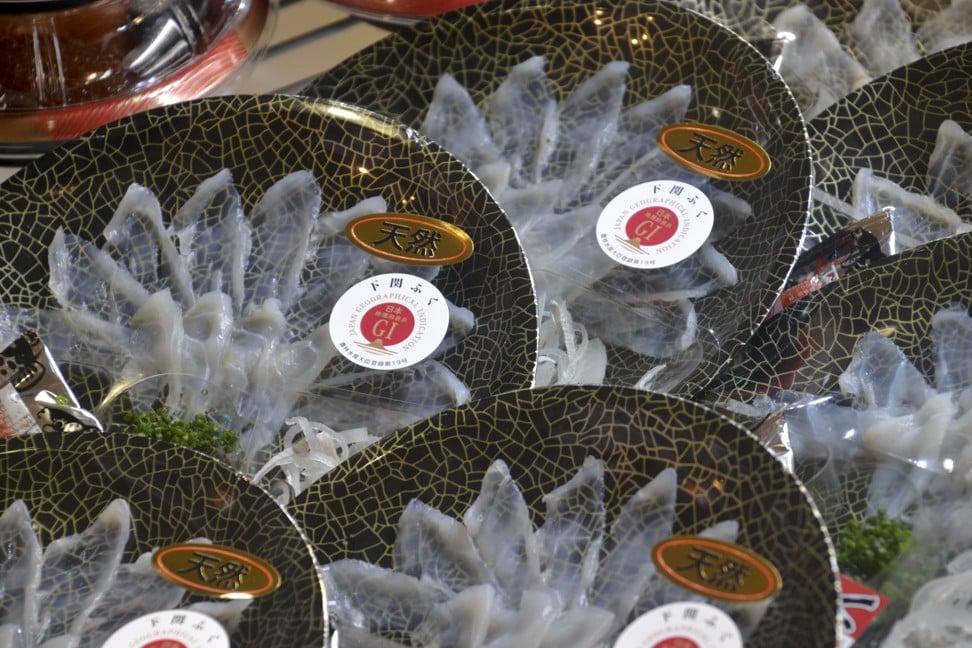
“96 is the most difficult number to communicate, while the numbers up to 99 are also pretty difficult,” he said.
I asked whether some people use special techniques or unique ways to bid, but he explained that everyone uses the same signs and expressions, which they learn as part of their training. I also wondered about his safety, being surrounded daily by thousands of fish, each of which can carry enough poison to kill up to 30 adults.
“The poison actually comes from the shellfish that the fish eat as it accumulates in their liver. There’s no threat in touching them – but the fugu will bite you,” he said.
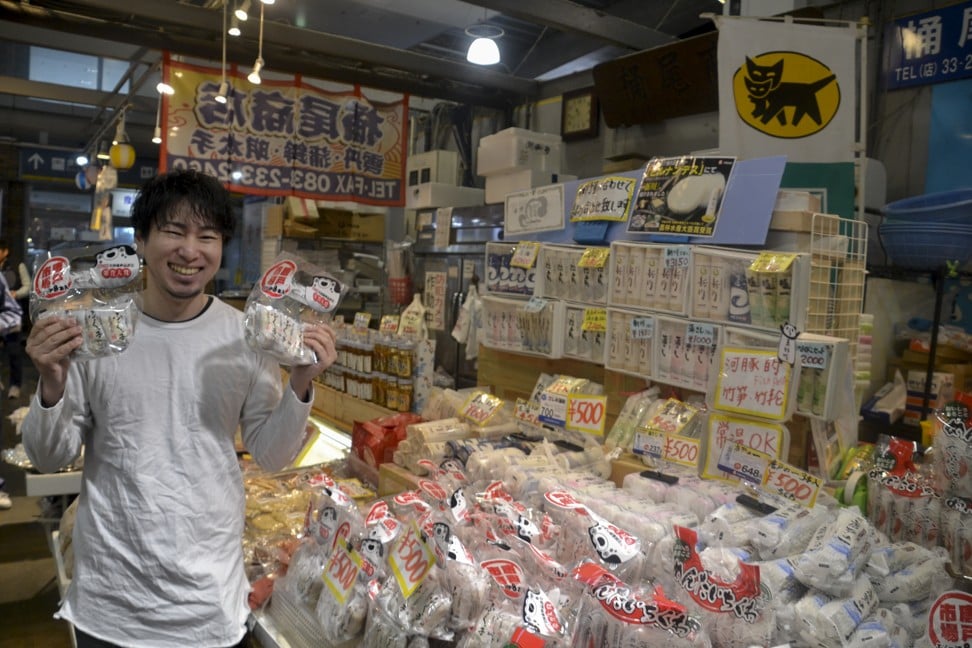
He explained with evident pride that Yamaguchi prefecture has not seen a poisoning case in decades; most of the incidents involve amateurs wrongly thinking that they can safely prepare the dish. Such are the local standards that only fugu prepared in Shimonoseki is allowed into the United States, while domestically the Japanese public can even order it online (with poison removed) before cooking it at home.
Unlike the crab fisherman I once interviewed who admitted he hated crab, the auctioneer is a big fan of fugu, preferring it in different guises, including “as sashimi marinated in ponzu, or in rice porridge. The bones are good fried as a snack with beer or also when it’s served as shirako soft roe.”
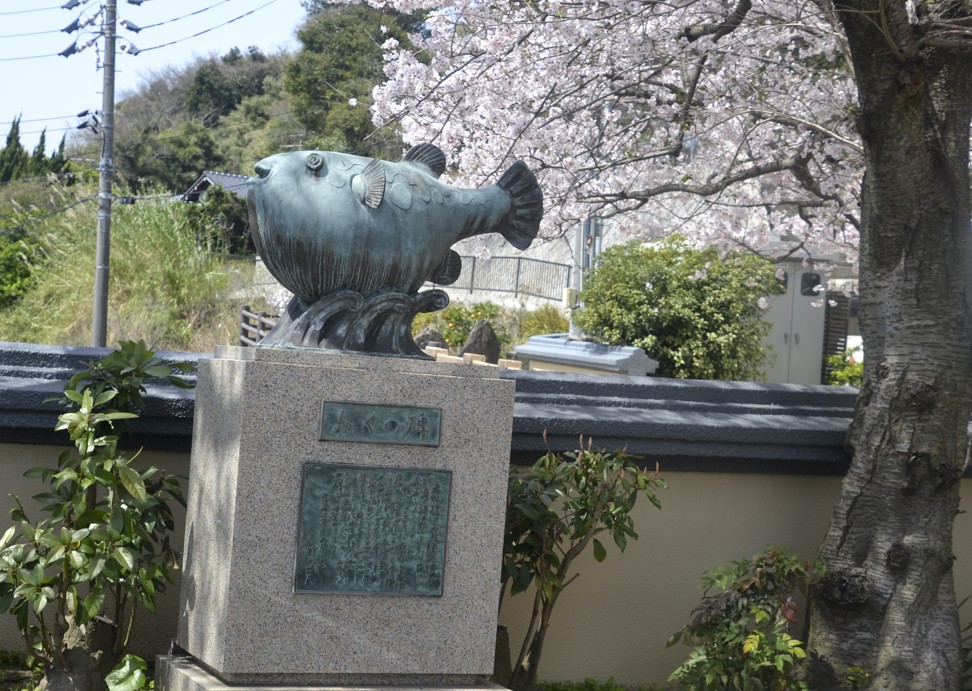
“Soft roe” is a somewhat poetic term for what is actually the milt – or sperm sacs – of fugu (and other fish). It’s fair to say it’s an acquired texture, borne out by my lunch later that day at the beautiful and historic Shimonoseki fugu restaurant Shunpanro.
Last supper? Japan’s diners divided over killer puffer fish
The sacs were just one of multiple ways the fish was served. Tessa fugu (sashimi) was so thinly sliced that it was transparent, allowing diners to appreciate the beautiful porcelain design on which it is served. Using a special knife called a hochi, chefs train for years to slice the sashimi.
The sashimi’s taste was unremarkable, having no distinct flavour until the ponzu sauce that accompanied it was added, but to far more discerning Japanese palates it is held up as one of the country’s truly great delicacies.

Perhaps my British upbringing and love of fish and chips made the deep-fried karaage version particularly memorable, while hirezake, a dish where the fish’s fins are grilled before being served in an elegant ceramic cup of hot sake, was another culinary first for me.
A hotpot-style dish called chirinabe, and fugu sushi, the fish lightly charred, were both excellent, but neither delivered what some have claimed is a classic sign of fugu, namely that a diner’s lips become ever so slightly numb.
Maybe, just like a fish sold in such strange secrecy, it was an effect that was still waiting to reveal itself.

